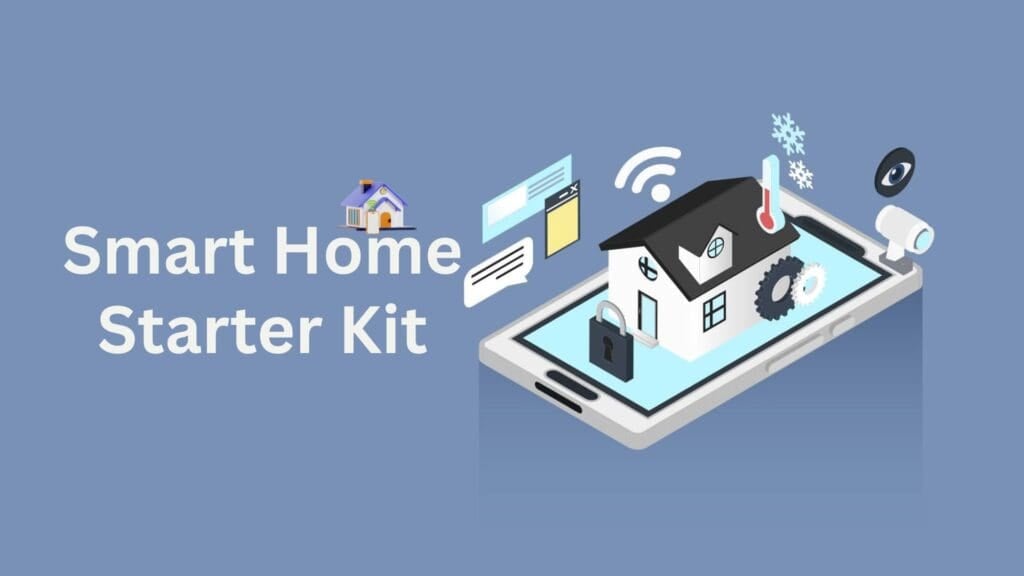The smart home has been mainstream for a decade now. While setting one up is easy and guides on doing so abound, everyone seems to always be talking about the same stuff. We all know that plugs, lights, thermostats, and motion sensors are great starter gadgets by now. The question is, which ones are you missing out on?
Rather than repeatedly discussing the same ground, this article focuses on rarely talked about yet beginner-friendly and high-impact smart home gadgets. Try them out and kick off a unique start to your smart home experience!
Raspberry Pi as a Home Automation or Sensor Hub
Contents
Most smart home gadgets are part of a closed ecosystem. But what if you found a great deal on a smart bulb and want to pair it with an incompatible sensor? Rather than lock yourself into a single ecosystem, you can set a Raspberry Pi to become your home automation hub.
It’s a cheap and flexible DIY solution that needs more tinkering than our other suggestions, which we will discuss later, but the results are worth it. Hook the Pi up to a touch display, set up Home Assistant, identify all your devices, and watch as they flawlessly work together to create complex automations and scenes.
You’ll want to make sure that your Pi connects to the internet securely, especially if you plan to access smart home controls through it remotely. Installing a lightweight Raspberry Pi VPN will eliminate the need to encrypt the connection. It will also allow you to safely connect from anywhere without having to forward ports or worry about the connection being monitored.
IR Blasters
Plugs aren’t the only way to make your old devices smart. IR blasters are much more versatile since they mimic remote control functionality for a wide range of traditional infrared-based devices. They’re perfect for TVs, ACs, air purifiers, and any other older device that doesn’t ordinarily connect to your wireless networks or smart home hub.
An IR blaster is the perfect non-conventional smart home starter item because it can automate items you already own. Why invest in a fancy new AC when you can have yours cool the house before you get home through the blaster and its app? You can set schedules or create other automations, too.
Smart Blinds Controllers
Having complete control over your blinds from anywhere is another overlooked yet super useful smart home ability. Corresponding controllers easily attach to the blinds’ original cords or rods, so the procedure is easy and non-invasive.
Automating your blinds opens up lots of possibilities. You can set them up to slowly open as the sun rises, creating a gentle wake-up routine. Alternatively, it’s a good idea to have them automatically close during the daytime in summer to help keep indoor temperatures low. Or, you can set random closing times each night while on vacation to give the appearance of occupancy.
While smart blinds may seem like a minor improvement to your smart home at first, they can actually enhance your home’s energy efficiency and security significantly. Plus, they add a touch of convenience to your daily routine.
Smart Pet Feeders and Trackers
Convenience in the smart home isn’t exclusive to humans! With the right gadgets, it’s possible to make your furry friends’ lives easier and safer, too.
First up, let’s talk about pet feeders. These connected dispensers dish out tasty treats at predefined times. Some even come with built-in cameras that let you check in on your pets’ snack time, so you can stay connected even when you’re not around. But feeding isn’t the only area where smart technology can keep an eye on your furry friends.
Smart pet trackers ensure you always know what your hyperactive furball is up to. They’re indispensable for watching unruly pets who want to explore outside the house without your permission. You can set the tracker to trigger smart locks when the pet is near them or have your smart bulb flash red if a pet leaves a designated perimeter to instantly make you aware of its absence.
Smart Leak Sensors
Our final suggestion is a simple, inexpensive sensor that may end up saving you thousands in damages. Leak sensors have tiny contacts on their bottom or edge that detect the presence of water. If connected to a smart home hub, they can instantly send an alert when they come into contact with water, letting you react in time.
More advanced versions come with additional temperature or humidity sensors. While not as cheap, they’re worth looking into if you’re worried about pipes freezing in winter or the onset of mold.
Build Your Smarter Tomorrow
These often-overlooked smart home gadgets show that new ideas don’t always come from the most obvious choices. Your very own personalized smart ecosystem can be built or further enriched with IR blasters, blind controllers, pet tech, DIY hubs, and leak sensors. Pick just one smart device to start with, and you’ll quickly see the big difference it can make.


